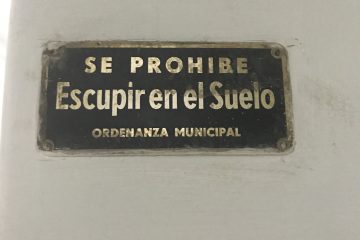I’ve come up with a story that in both Spanish 1 and 2 has worked really well with teaching demonstratives. We’ve worked with those quite a bit for the past couple of weeks, and I’ve been amazed at how fast my students have become consistent and proficient at using them.
Side note: A couple of veteran Spanish teachers and I were talking recently, and they were remarking how 1/2 hour once per week (our middle school Spanish schedule) is a complete waste of time. I said I thought it was of some benefit, because I could see how my Spanish 1 students came in to my class after 3 years of that schedule and were advanced in their ability to use verbs like soy and estoy. One of the teachers said, “Oh, you can teach that in two days.”
Yes, you can teach it in two days. But the students will not use it consistently accurately after that. They just flat won’t. This is what’s wrong with us–we care more about moving through material than we do about whether our students can use the material. I had a Spanish 3 student with very high aptitude write yo tiene on his blog last week and I could have smacked him. What is our goal here, finishing a book? Assigning a grade? Or enabling them to communicate with hundreds of millions of people who have something to teach them about life and the world?
Okay, so the story:
There is a girl, her name is Goldilocks, she has blond hair and she’s however old the students decide (reviewing beginner phrases). She’s wearing a (color) dress. Is she sad? No, she’s happy. She has a friend, her friend is an animal, he’s a little bear, and his name is Charlie.
(I draw these two on the left side of the board, and then draw three long arcs at about equal widths across the board to indicate space close to them, a bit farther, and farthest away.)
Goldilocks wants lots of things. Charlie has lots of things in his house. Charlie offers her these things. Goldilocks wants soup. Charlie says, ‘Do you want this soup’? Does Goldilocks want this soup? No, this soup is too hot. (repeat for that soup, which is too cold) (repeat for that soup over there, which is perfect)
(repeat for spoons–we say one for each hand just so we have it plural–two are too red, two are too green, and two are perfectly yellow, the color of her hair)
(repeat for bread–one is too big, another too small, the third just right)
We just did this in Spanish 1 because we’re working on kitchen/food vocabulary, but you can use anything. In Spanish 2 we were working on dropping the noun to get esto, ésos, etc, and we used gorra, pantuflas, and something else that escapes me at the moment.
Believe it or not, once you’ve gotten high-schoolers to accept the fact that where a second language is concerned, they’re like kindergarteners, they’ll tolerate just about anything–including nursery rhymes!
2 Comments
Comments are closed.




Hi Sara, What would a lesson from start-to-finish with this look like? I’m just starting to experiment with TPRS and “asking the story,” any help would be wonderful!
Great question, thanks Donna! I would launch into the story as soon as class starts (high brain power time!) and it would take about half of a 50-minute class period, maybe a little less. Then I would follow up with some activities: act out the story (or a similar one) by placing objects around the room, ask learners to identify objects on a table full of food using este, ese, aquel and give their opinions (me gusta esta carne, pero no me gusta esa bebida). I might hand them an illustration and give a word box and ask them to label the objects in the field, etc.
Not an easy thing to explain in a blog comment – I hope this helps!